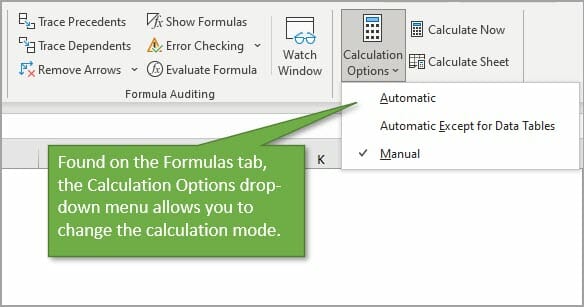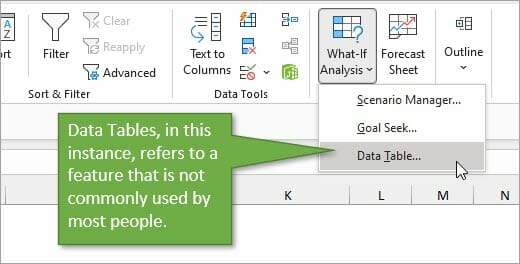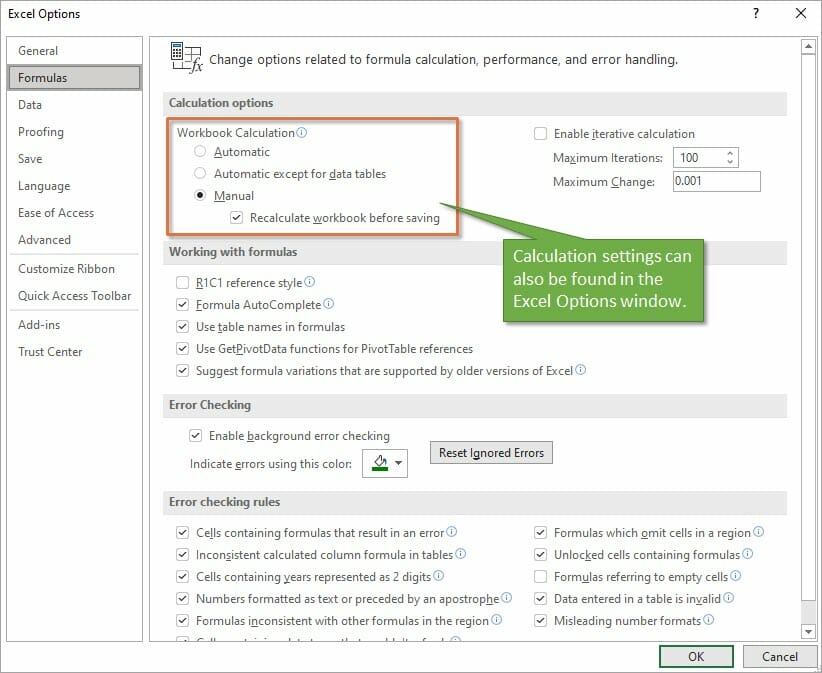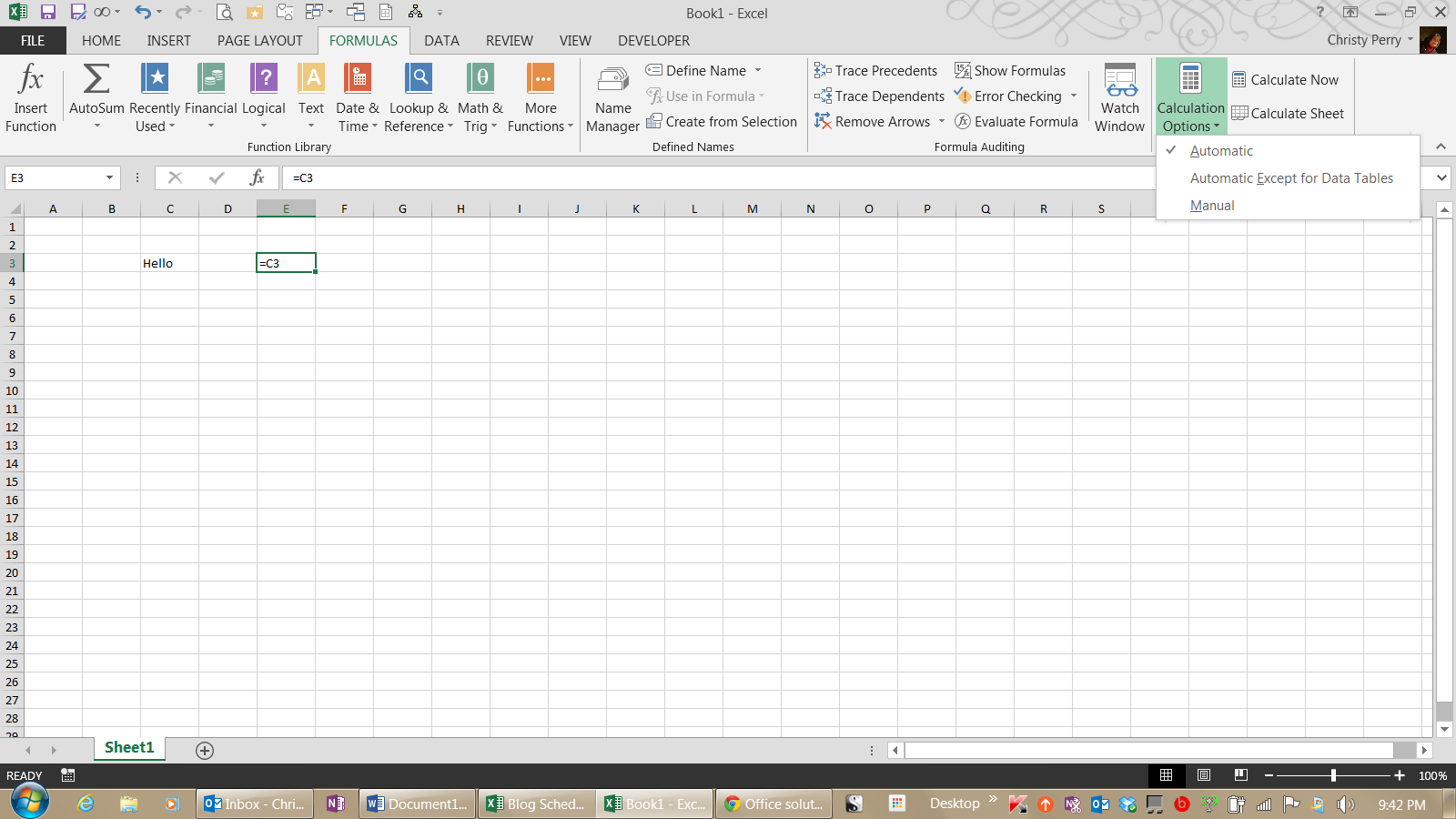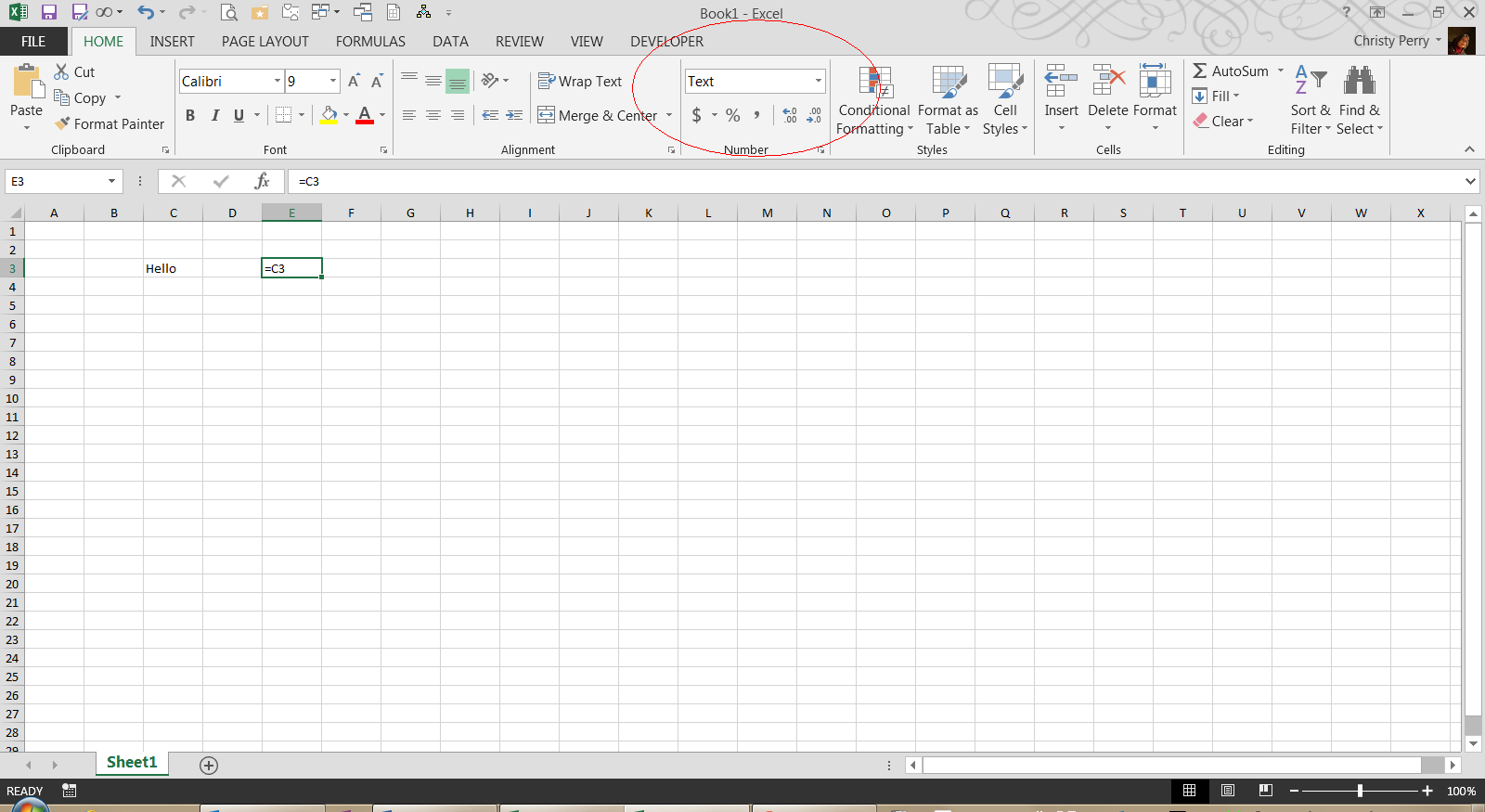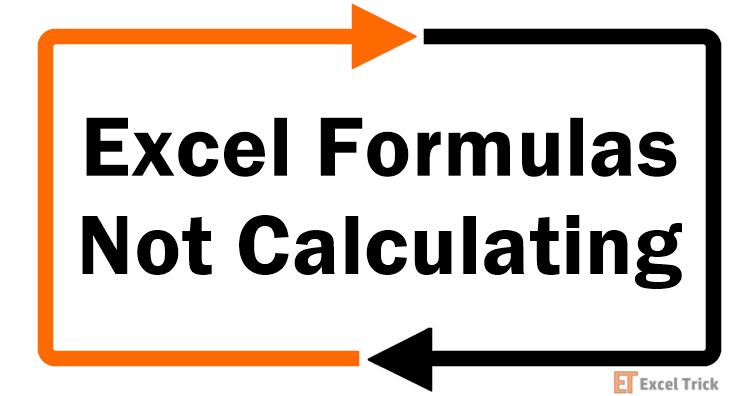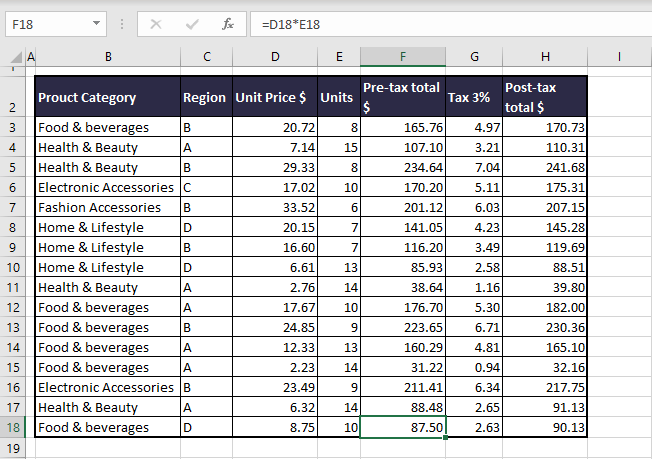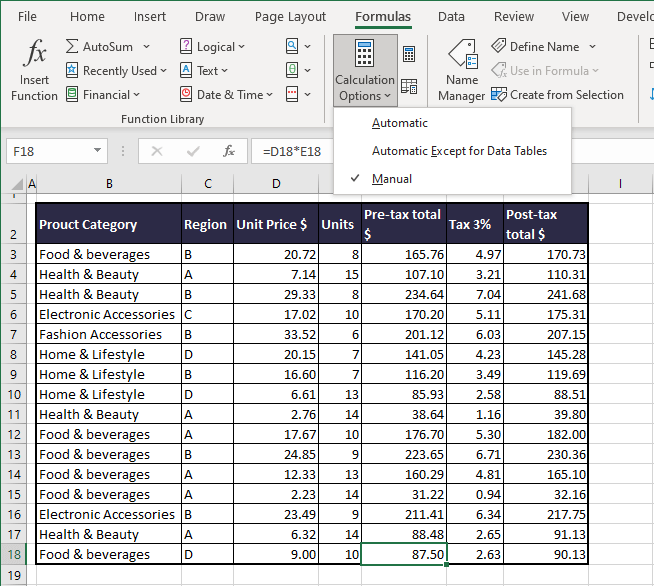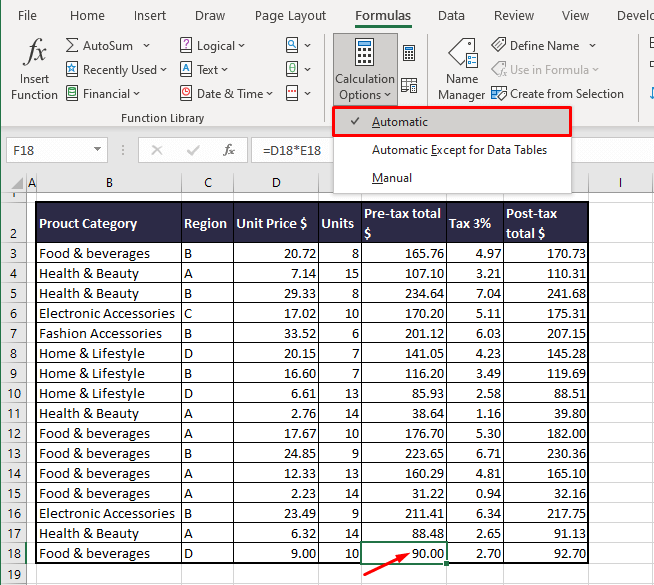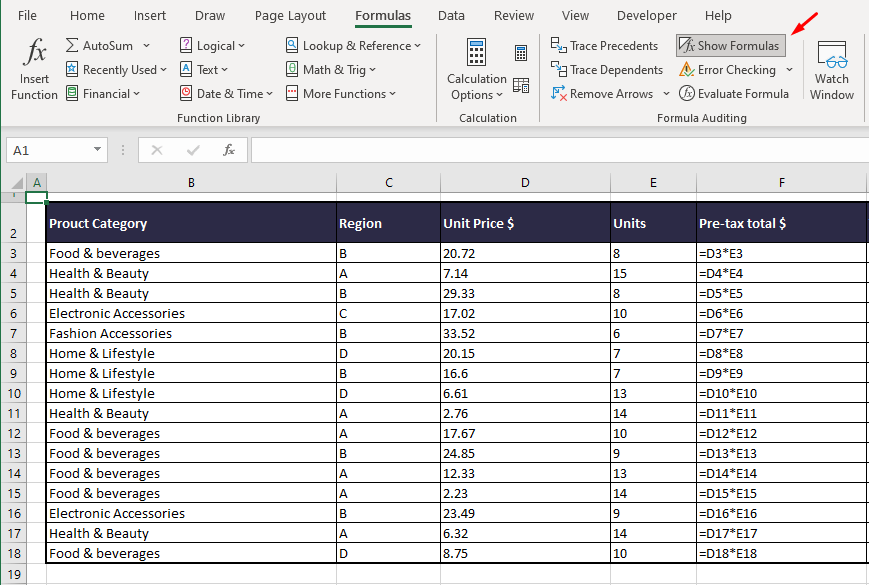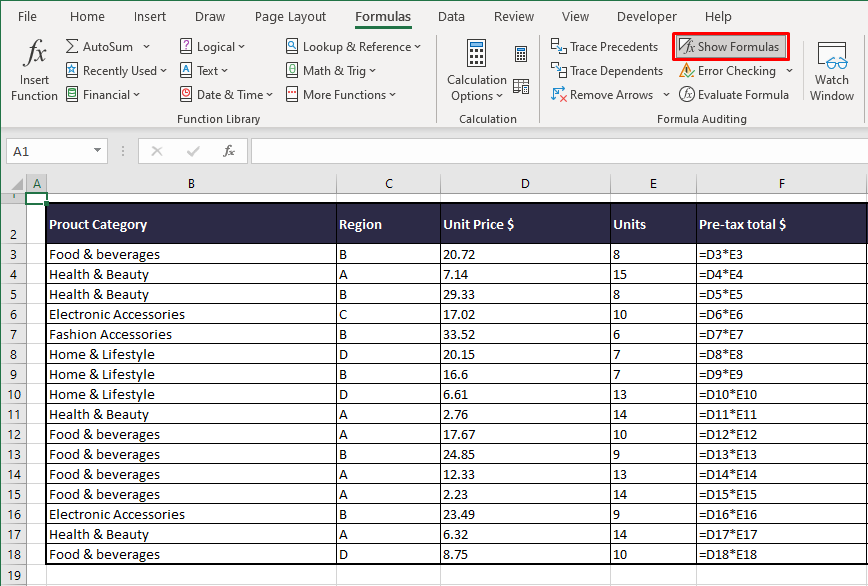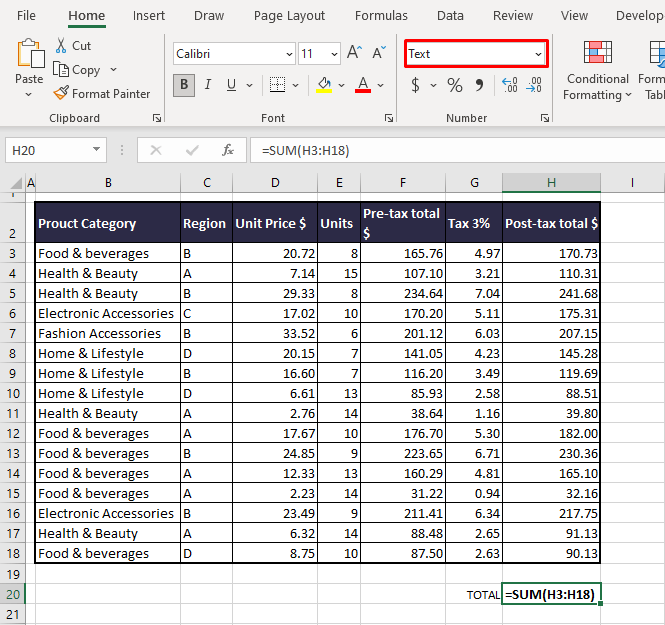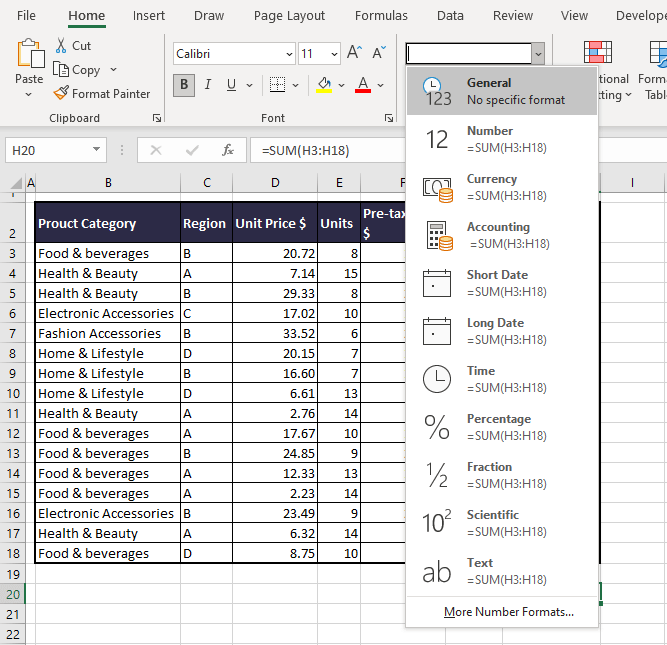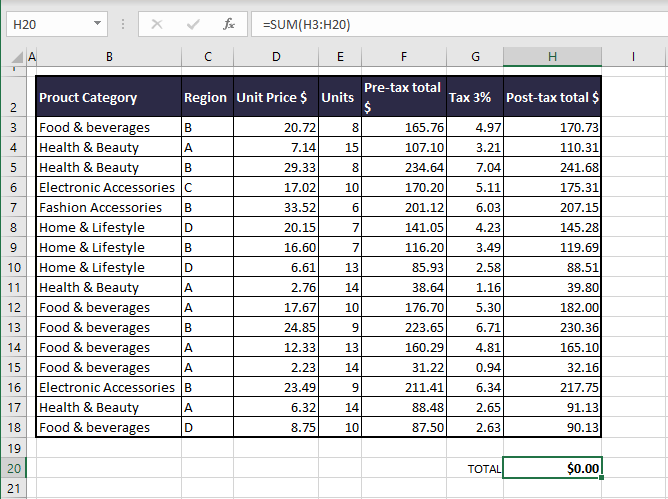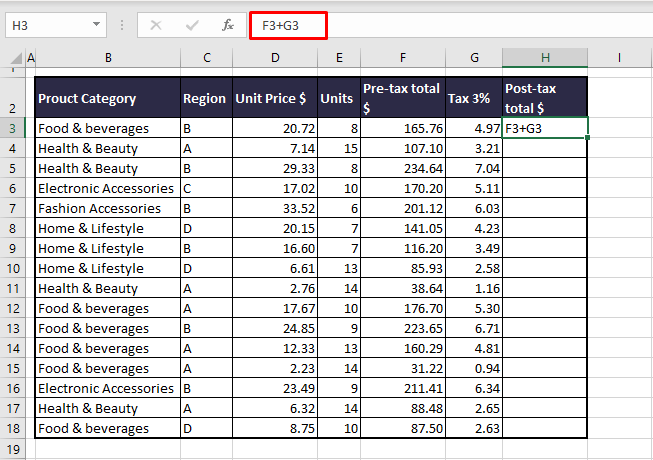Bottom Line: Learn about the different calculation modes in Excel and what to do if your formulas are not calculating when you edit dependent cells.
Skill Level: Beginner
Watch the Tutorial
Download the Excel File
You can follow along using the same workbook I use in the video. I’ve attached it below:
Why Aren’t My Formulas Calculating?
If you’ve ever been in a situation where the formulas in your spreadsheet are not automatically calculating as they should, you know how frustrating it can be.
This was happening to my friend Brett. He was telling me that he was working with a file and it wasn’t recalculating the formulas as he was entering data. He found that he had to edit each cell and hit Enter for the formula in the cell to update.
And it was only happening on his computer at home. His work computer was working just fine. This was driving him crazy and wasting a lot of time.
The most likely cause of this issue is the Calculation Option mode, and it’s a critical setting that every Excel user should know about.
To check what calculation mode Excel is in, go to the Formulas tab, and click on Calculation Options. This will bring up a menu with three choices. The current mode will have a checkmark next to it. In the image below, you can see that Excel is in Manual Calculation Mode.
When Excel is in Manual Calculation mode, the formulas in your worksheet will not calculate automatically. You can quickly and easily fix your problem by changing the mode to Automatic. There are cases when you might want to use Manual Calc mode, and I explain more about that below.
Calculation Settings are Confusing!
It’s really important to know how the calculation mode can change. Technically, it’s is an application-level setting. That means that the setting will apply to all workbooks you have open on your computer.
As I mention in the video above, this was the issue with my friend Brett. Excel was in Manual calculation mode on his home computer and his files weren’t calculating. When he opened the same files on his work computer, they were calculating just fine because Excel was in Automatic calculation mode on that computer.
However, there is one major nuance here. The workbook (Excel file) also stores the last saved calculation setting and can change/override the application-level setting.
This should only happen for the first file you open during an Excel session.
For example, if you change Excel to manual calc mode before you save & close the file, then that setting is stored with the workbook. If you then open that workbook as the first workbook in your Excel session, the calculation mode will be changed to manual.
All subsequent workbooks that you open during that session will also be in manual calculation mode. If you save and close those files, the manual calc mode will be stored with the files as well.
The confusing part about this behavior is that it only happens for the first file you open in a session. Once you close the Excel application completely and then re-open it, Excel will return to automatic calculation mode if you start by opening a new blank file or any file that is in automatic calculation mode.
Therefore, the calculation mode of the first file you open in an Excel session dictates the calculation mode for all files opened in that session. If you change the calculation mode in one file, it will be changed for all open files.
Note: I misspoke about this in the video when I said that the calculation setting doesn’t travel with the workbook, and I will update the video.
The 3 Calculation Options
There are three calculation options in Excel.
Automatic Calculation means that Excel will recalculate all dependent formulas when a cell value or formula is changed.
Manual Calculation means that Excel will only recalculate when you force it to. This can be with a button press or keyboard shortcut. You can also recalculate a single cell by editing the cell and pressing Enter.
Automatic Except for Data Tables means that Excel will recalculate automatically for all cells except those that are used in Data Tables. This is not referring to normal Excel Tables that you might work with frequently. This refers to a scenario-analysis tool that not many people use. You find it on the Data tab, under the What-If Scenarios button. So unless you’re working with those Data Tables, it’s unlikely you will ever purposely change the setting to that option.
In addition to finding the Calculation setting on the Data tab, you can also find it on the Excel Options menu. Go to File, then Options, then Formulas to see the same setting options in the Excel Options window.
Under the Manual Option, you’ll see a checkbox for recalculating the workbook before saving, which is the default setting. That’s a good thing because you want your data to calculate correctly before you save the file and share it with your co-workers.
Why Would I Use Manual Calculation Mode?
If you are wondering why anyone would ever want to change the calculation from Automatic to Manual, there’s one major reason. When working with large files that are slow to calculate, the constant recalculation whenever changes are made can sometimes slow your system. Therefore people will sometimes switch to Manual mode while working through changes on worksheets that have a lot of data, and then will switch back.
When you are in Manual Calculation mode, you can force a calculation at any time using the Calculate Now button on the Formulas tab.
The keyboard shortcut for Calculate Now is F9, and it will calculate the entire workbook. If you want to calculate just the current worksheet, you can choose the button below it: Calculate Sheet. The keyboard shortcut for that choice is Shift + F9.
Here is a list of all Recalculate keyboard shortcuts:
| Shortcut | Description |
| F9 | Recalculate formulas that have changed since the last calculation, and formulas dependent on them, in all open workbooks. If a workbook is set for automatic recalculation, you do not need to press F9 for recalculation. |
| Shift+F9 | Recalculate formulas that have changed since the last calculation, and formulas dependent on them, in the active worksheet. |
| Ctrl+Alt+F9 | Recalculate all formulas in all open workbooks, regardless of whether they have changed since the last recalculation. |
| Ctrl+Shift+Alt+F9 | Check dependent formulas, and then recalculate all formulas in all open workbooks, regardless of whether they have changed since the last recalculation. |
Macro Changing to Manual Calculation Mode
If you find that your workbook is not automatically calculating, but you didn’t purposely change the mode, another reason that it may have changed is because of a macro.
Now I want to preface this by saying that the issue is NOT caused by all macros. It’s a specific line of code that a developer might use to help the macro run faster.
The following line of VBA code tells Excel to change to Manual Calculation mode.
Application.Calculation = xlCalculationManual
Sometimes the author of the macro will add that line at the beginning so that Excel does not attempt to calculate while the macro runs. The setting should then changed be changed back at the end of the macro with the following line.
Application.Calculation = xlCalculationAutomatic
This technique can work well for large workbooks that are slow to calculate.
However, the problem arises when the macro doesn’t get to finish—perhaps due to an error, program crash, or unexpected system issue. The macro changes the setting to Manual and it doesn’t get changed back.
As I mention in the video, this was exactly what happened to my friend Brett, and he was NOT aware of it. He was left in manual calc mode and didn’t know why, or how to get Excel calculating again.
Therefore, if you are using this technique with your macros, I encourage you to think about ways to mitigate this issue. And also warn your users of the potential of Excel being left in manual calc mode.
I also recommend NOT changing the Calculation property with code unless you absolutely need to. This will help prevent frustration and errors for the users of your macros.
Conclusion
I hope this information is helpful for you, especially if you are currently dealing with this particular issue. If you have any questions or comments about calculation modes, please share them in the comments.
Maintenance Alert: Saturday, April 15th, 7:00pm-9:00pm CT. During this time, the shopping cart and information requests will be unavailable.
Excel Formulas Not Calculating? How to Fix it Fast
Categories: Basic Excel
You’ve created the reports for your management meeting, and, just before you print copies for the executives, you discover that the totals are all showing last month’s values. How do you fix it—fast?
1. Check for Automatic Recalculation
On the Formulas ribbon, look to the far right and click Calculation Options. On the dropdown list, verify that Automatic is selected.
When this option is set to automatic, Excel recalculates the spreadsheet’s formulas whenever you change a cell value. This means that, if you have a formula that totals up your sales and you change one of the sales, Excel updates the total to show the correct sum.
When this option is set to manual, Excel recalculates only when you click the Calculate Now or Calculate Sheet button. If you prefer keyboard shortcuts, you can recalculate by pressing the F9 key. Manual recalculation is useful when you have a large spreadsheet that takes several minutes to recalculate. Instead of waiting impatiently while it recalculates after every change you make, you can set the recalculation to manual, make all of your changes, and then recalculate at once.
Unfortunately, if you set it to manual and forget about it, your formulas will not recalculate.
2. Check the Cell Format for Text
Select the cell that is not recalculating and, on the Home ribbon, check the number format. If the format shows Text, change it to Number. When a cell is formatted as Text, Excel makes no attempt to interpret the contents as a formula.
After you change the format, you’ll need to reconfirm the formula by clicking in the Formula Bar and then pressing the Enter key.
Note: If you format a cell as General and you discover that Excel is changing it automatically to text, try setting it to Number. When a cell formatted as General and the cell contains a reference to another cell, Excel copies the format of the referenced cell. Choosing any format other than General will prevent Excel from changing the format.
3. Check for Circular References
Look at the bottom of the Excel window for the words CIRCULAR REFERENCES.
Like circular logic, a circular reference is a formula that either includes itself in its calculation or refers to another cell which depends on itself. Be aware that a circular reference can, in some instances, prevent Excel from calculating a formula. Correct the circular reference and recalculate your spreadsheet.
Next Steps
You can fix most recalculation problems with one of these three solutions. Now, fix that report, and get ready for your meeting.
Or continue your Excel education here.
PRYOR+ 7-DAYS OF FREE TRAINING
Courses in Customer Service, Excel, HR, Leadership,
OSHA and more. No credit card. No commitment. Individuals and teams.
How to fix Excel formulas not calculating (Refresh Formulas)
Formulas are the life and blood of Microsoft Excel.
We use them to add numbers, subtract dates, and even extract texts.
When entering a formula, the result comes almost immediately!
But what happens when it doesn’t?

Obviously, 2+2 = 4! Not 5!
Could we actually be better at basic math than Excel? Probably not 🤣
So, how do you fix a formula that won’t calculate automatically?
In this tutorial, you learn about why your formulas are not updating and how to fix them!
If you want to tag along, download the sample Excel file here.
Let’s dive right into the most common cause of formulas not updating:
Calculation options set to ‘Manual calculation’ mode
What? 😲
Could it really be that simple?
In Excel, it is actually possible to change the calculation setting.
You can check and set the current calculation mode like this:
1. Click the Formulas tab.

2. Click on Calculation Options.

3. Verify that the calculation setting is Automatic.

4. Formulas will not recalculate automatically if Excel is set to Manual calculation mode.
In the practice Excel workbook, the formula in cell C2 is a simple addition formula:
=A2 + B2
You can change the values of A2 & B2 as you wish…

…but the formula result will not change while the setting is still in Manual calc mode.
5. To get the correct result, set the Calculation Options to Automatic calculation mode.

Voila!
Now you can go back to working with Excel as usual!
Alternatively…
You can also change the calculation mode by going into File > More… > Options > Formulas tab.

There are four calculation modes to choose from:
- Automatic – All dependent formulas in the entire workbook are recalculated as cell values change.
- Automatic Except for Data Tables – Same as Automatic. But Data Tables are only recalculated if a cell inside the table has changed
- Manual – The entire workbook is only recalculated if you press F9. Or if you click Calculate Now or Calculate Sheet in the Formulas ribbon
- Manual / Recalculate before saving – Same as Manual calc mode. But formulas are also recalculated every time you save the file.
But why did my Calculation Mode change? 🤔
Bear in mind that the calculation setting is an application-level setting.
If you change the Calculation Mode, this applies to the entire workbook and all other open workbooks.
Also, Excel uses the last saved calculation mode of the first workbook opened. All workbooks opened in the same session will use the same mode.
Try to open the practice Excel file without any other open workbooks.
You will notice that it opens in Manual calculation mode. This was the setting it was last saved with.You can learn more about Calculation Mode behavior from the official Microsoft website.
Running a macro can also change the calculation mode
This is especially true if the macro or VBA developer used any of the lines below:
- Application.Calculation = xlCalculationAutomatic
- Application.Calculation = xlCalculationManual
If you are not working with a macro-enabled workbook, then you can definitely rule this out!
Why use ‘Manual calculation’ mode?
Well, if you are working with a large amount of data, you may notice a slight lag or delay in Excel. 🐌
This is usually caused by Excel automatically recalculating formulas with every change.
This can slow your work down quite a lot.
💡 So, you can change to Manual calculation mode as you enter or change data and switch back to Automatic later on.
Manual calculation shortcuts
In Manual mode, you can refresh formulas by pressing F9.
You can also click the Calculate Now or Calculate Sheet buttons in the Formulas ribbon.

This can help you save time and avoid the stress of waiting for Excel to finish updating formulas!
Cell is formatted as text
Wrong cell format could also prevent the automatic calculation of a formula.
Take a look at the worksheet “Example-Text Format” of the practice Excel file.
The Excel formula in cell C2 is exactly the same as the formula in cell C2 of the worksheet “Example-Calc Mode”.

But in the worksheet “Example-Text Format”, it only shows the formula and not the value.
Even if the Excel workbook is not set to Manual calc mode, the cell value will not update.
To fix this, you can change the cell format:
1. In the Home ribbon, click on the Number Format drop-down.

2. Select your desired number format.
The General and Number formats are usually used for calculations.

3. Double-click on the cell or click the formula bar.
The cell references should are now highlighted as they normally are in an Excel formula.

4. Hit Enter to get the result!

Excel set to show formulas instead of results
Another thing to consider is the Show Formulas feature.
If this is ON, cells will show the formulas instead of the values.
You can toggle it ON and OFF by clicking the Show Formulas button in the Formulas ribbon.

You can also use these shortcuts to toggle display between formulas and values:
- On Windows: Use Ctrl + ‘
- On Mac: Use ^ + `
The Show Formulas feature changes the display between formula and cell value.
This is so you can check for errors and inconsistencies in the entire workbook.
Try it out for yourself!
There’s a circular reference somewhere in your workbook
Are you still having issues even after the above fixes?
If so, you might have a circular reference in your workbook.
This is when a formula refers to its own cell either directly or indirectly.

In the worksheet “Example-Circ Ref 1” of the practice workbook, we have a simple SUM formula at cell B6.
The formula includes itself in the calculation “=SUM(B2:B6)”.
Thus, the formula will not calculate correctly.
You can identify and fix formulas with circular references like this:
1. In the Formulas ribbon, click on Error Checking.

2. This opens a drop-down. Select Circular References.
It will then show you a list of cells with circular references that need fixing.

Alternative method to check for circular references
You can check the bottom left corner of the Excel window.
It will display a message like the one below if there are circular references.

You may also see blue lines that show formulas dependent on one another.
Open the worksheet “Example-Circ Ref 2” for this next example.
Here you have slightly more complex formulas involving a budget spreadsheet.

The example above shows two ways to calculate the Contingency and Total Project Cost.
- In Calculation A: The formula for the Total Project Cost at cell B9 is “=SUM(B4:B8)” while the formula for the 5% Contingency at cell B7 is “=B9*0.05”.
Thus, cells B7 and B9 have formulas dependent on one another. This is a circular reference and the Excel formulas default to zero. - In Calculation B: This circular reference is fixed by having a Sub-total at cell F7.
This way, the Contingency can be computed at cell F8 and the Total Project Cost is now just “=F7+F8”.
There are no circular references here so the values are computed correctly!
You can learn more about this and other examples in our tutorial about circular references here.
That’s it – Now what?
You are now familiar with the four most common reasons why your Excel formulas won’t automatically calculate.
Reason number 1, the Calculation Mode setting, is almost always the culprit ⚙️
This is especially true when you open workbooks downloaded from the Internet. Or if you open workbooks from a different computer.
You will encounter wrong cell Text formatting, Show Formulas toggle, and Circular References less often.
But all this doesn’t matter if you don’t know how to actually build formulas and functions that make your work easier.
Functions like IF, SUMIF, and VLOOKUP.
You learn all these (and more!) in my free 30-minute training. Click here to enroll.
Other relevant resources
You just read what to do when the formulas don’t update. But what if you get different error messages like #VALUE, #REF, and #NAME?
That’s an entirely different part of Excel and you can read all about that here.
Or you can read here how to use IFERROR or ISERROR to work with errors and have formulas work all the time!
Kasper Langmann2022-09-26T18:10:39+00:00
Page load link
Home/ Formulas/ 5 Reasons Why your Excel Formula is Not Calculating
When your Excel formula is not calculating, or not updating, it can be very frustrating. Your formulas are the driving force for your spreadsheet.
There are 5 reasons for your Excel formula not calculating. In this tutorial we explain these 5 scenarios.
Watch the Video – Excel Formula Not Calculating
1. Calculation Options is Set to Manual
The first thing that you should check is that the calculation options are not set to manual. This is the most likely problem.
Click the Formulas tab and then the Calculation Options button.
If this is set to manual, the formulas will not update unless you press the Calculate Now or Calculate Sheet buttons.
Change it to Automatic and the formulas will start working.
This setting can be changed by macros, or by other workbooks that you may have opened first. So if you are not aware of this setting, it could still be a reason for the formula not calculating.
2. Formula Not Calculating as Cell is Formatted as Text
Another common reasons is accidentally formatting the cells containing formulas as text. These will not calculate whilst in this format.
To check this; click on the cell and check the Number group of the Home tab.
If it displays Text. Change the format to General using the list provided.
Then re-calculate the formula in the cell by double clicking on the cell and pressing Enter.
3. A Space is Entered Before the Equals
When typing the formula be sure not to enter a space before the equals. This is difficult to notice so can go unrecognised, however it will prevent the formula from calculating.
Double click the cell, or edit it in the Formula Bar. Check if there is a space and if so delete it. The formula will update.
4. An Apostrophe is Entered Storing the Formula as Text
When an apostrophe (‘) is entered before typing in Excel, that tells Excel to store the content as text. This is a common approach to store numbers such as phone numbers as text to retain the leading zeros.
This however could be the reason why your formula is not calculating.
The apostrophe will not be visible in the cell on the spreadsheet, but you can see it in the Formula Bar.
Double click the cell, or edit it in the Formula Bar and delete the apostrophe.
5. The Show Formulas button is Turned On
The final reason could be that the Show Formulas button on the Formulas tab is turned on. This can easily be done accidentally, or possibly by someone else using this workbook previously.
This button is used when auditing formulas. It shows the formula instead of the formula result, stopping them from calculating. This can be helpful when troubleshooting formula problems.
Simply click the Show Formulas button again to turn it off and the formula will be working.
More Awesome Excel Tutorials
- Using Wildcard characters in Excel formulas
- Prevent formulas from showing in the Formula Bar
- Troubleshooting formulas in Excel
- Formula to extract a postcode from a UK address
- Is Udemy the right E-learning platform for you?
Reader Interactions
You are seeing the formula itself instead of its calculated result, or seeing it without an equals sign, your formula is not responding to some changes, or is responding with an unexpected result. If we’ve hit the nail on the head, you are welcome to browse this tutorial on how to fix Excel formulas that are not calculating.
The potential issues we will discuss today are Automatic Calculation being off, Show Formulas being on, formula as text, formula with a leading apostrophe or without the equals sign, and circular references.
Find out about these Excel formula troubles in detail and how to swipe them clean from your workbooks because what good is Excel if it’s misbehaving in formula performance?
Out with the Excel toolbox and let’s get fixing!
Automatic Calculation is Turned Off
The first culprit that may be causing a formula to not work is the Automatic Calculation Option, particularly when it is turned off. The implication of that is the Manual option being on instead. Consequently, formulas will fail to update when a value of a referenced cell in the formula has been changed.
Turning off Automatic Calculation may be helpful to quicken a slow file. Excel’s calculation/recalculation of formulas may lag a workbook especially if it contains many formulas, volatile functions that recalculate with every recalculation in the workbook, off-worksheet or workbook links, or data tables.
In such cases it may be deemed efficient to turn off Automatic calculation. Read ahead to find out how Automatic and Manual Calculation options behave.
What are Automatic & Manual Calculation Modes
On a regular Excel day, when you change a value of a cell that is referred in a formula, the formula recalculates to adjust as per the new value entered. A volatile function recalculates with every recalculation in the workbook and when the workbook is opened. This is the default Calculation Option i.e. the Automatic Calculation Option.
With the Manual Calculation Option selected instead, see the static behavior of formulas. In the example shown below, have a look at cell F18. The pre-tax total is calculated as $87.50 by multiplying the unit price in D18 by the number of units in E18:
Let’s say we have just received a notification that the price of this product had gone up from $8.75 to $9.00 but hadn’t been accounted for in the system. When we punched in the new unit price, the pre-tax total did not update itself.
When we checked the Calculation Options, we found that it has been set to Manual.
In the Manual mode, the formula will not recalculate unless you recalculate the formula cell itself. Volatile functions will also not update by opening the file or with recalculation in the workbook.
As a result, there will be three ways of getting the formula cell to recalculate.
- Editing the formula cell will make it recalculate.
- Using other calculation options in the Formula tab:
Calculate Sheet (Shift + F9) will recalculate the active worksheet while Calculate Now is for the whole workbook. To recalculate all open workbooks, press the Ctrl + Alt + F9 keys.
- Either these manual methods, or you can switch the Calculation Option back to Automatic. We may have given the way to do that away but here it is.
How to Turn Automatic Calculations On
This is the fix on having the Manual Calculation Option on. Select the Formulas tab and then the Calculation Options icon from the Calculation group. Click on the Automatic option.
The tick mark shifts from Manual to Automatic in Calculation Options and all stuck formulas will instantly recalculate when the Automatic option is selected. Closing or reopening the workbook will not change this setting and it will also apply to all other open workbooks and workbooks subsequently opened after changing the Calculation Option.
If need be, you can turn the Automatic recalculation off again after finishing your work in the workbook by selecting the Manual option.
Show Formulas Option is Turned On
The columns are blown wide open, the Number Formats are flayed, and the formulas are baring themselves, having eaten up the formula output. What is going on? If the correct guess is Show Formulas being the pest, the expansion in column widths allows the exposed formulas to be displayed.
This was the ideal life of our worksheet:
Now there’s this:
And that’s just half of the sheet.
In this state, no new or old formulas on the spreadsheet will calculate; the formula will only be displayed like text. That is quite the whole point of the Show Formulas feature; it makes every format like text when enabled; the Number Formats will be gone; dates will turn into serial numbers, numbers will be aligned from right to left and formulas will show as text instead of the calculated value.
A selected formula cell will also highlight the referred cells as in cell-edit mode (note the difference in the before and after sample shots above).
In some situations, use of this feature is warranted as it is much easier to view all the formulas instead of going to every cell of interest and reading the formula off the Formula Bar. But anyway, you might be done with the formula exposure or want nothing to do with this Expocalypse.
Either way, below you’ll see how to turn the Show Formulas option off.
Go to the Formulas tab > Formula Auditing group to check if Show Formulas is highlighted in a darker gray, indicating that the feature is on:
Click on the Show Formulas button to turn it off.
The sheet will be restored to the original form without any value or format actually changed:
You can work the Ctrl + ` (grave accent) keys as a keyboard shortcut to toggle Show Formulas on and off.
Notes:
Show Formulas only applies to the active worksheet.
Show Formulas applies to all the formulas on the sheet. Therefore, if it’s not all the formulas giving you trouble collectively, your trouble might be explained in the next sections.
Recommended Reading: Excel Shows Formula Instead of Result
Formula is Entered as Text
If the other formula cells are looking and doing alright, and one (or a few) aren’t, good chances are that the formula is entered as a text. There could be a handful of reasons for this.
The format of a certain range on a sheet could have been preset as Text so that when a formula was entered, it behaved as simple text instead of returning the formula’s result. Or the format could have been set by the person who passed the file down to you. If it was you, you’d know why you did it.
How this problem will appear on a worksheet:
H20 is not in cell-edit mode, yet the formula is showing just by selecting the cell. In the highlighted Number Format Bar, it is evident that the format is set to Text instead of General or any other relevant Number Format.
Now for the fix. Select the cell with the Text format. Click on the right-side arrow of the Number Format Bar and select the General or any other format you wish to apply to the cell.
For more Number Formats, select the More Number Formats option at the bottom of the menu. You will be led to the Format Cells dialog box for many more formats to apply and edit.
After selecting the format (we have chosen the Currency format from the Number Format Bar), you need to recalculate the formula cell to get it to accept the change in format and return the result of the formula.
Now we have gotten the formula output in the applied Number Format.
Circular References in the Formula
A formula will not deliver the expected result if it contains a circular reference. In Excel, a circular reference occurs when a formula contains a direct or indirect reference of the cell it is in.
Excel won’t leave too much to the imagination the first time around; when you hit the Enter key on the formula containing a circular reference, Excel will produce a pop-up warning and that would be a good time to change the location of the formula cell or to edit the active cell out of the formula.
A small example of what a direct circular reference and its warning message looks like:
The alert will only show the first time a circular reference is entered in a workbook.
While calculating the sum of the post-tax figures in column H, we have accidentally extended the cell reference in the formula to H3:H20 instead of H3:H18. This way, the formula contains the formula cell itself and triggers the circular reference warning.
An indirect circular reference arises when the target cell contains a formula referring to a cell that refers back to the target cell. Very much the circle of Excel life.
When you close the error message, the formula with a circular reference ends up in 0 (or the last calculated value in some cases):
While this is the sum of the column and you know that the final value can’t be 0, for another formula you may assume 0 to be the answer and that throws off the representation of your dataset. You can check for circular references in the Formula tab > Formula Auditing group > Error Checking menu > Circular References option. The feature confirms that indeed there is a circular reference in cell H20. Click on the mentioned cell reference and the feature will select the problem cell on the worksheet.
It only shows one circular reference at a time in the submenu; the same one that is displayed in the Status Bar but the Status Bar won’t select the shown circular reference cell. Use the feature to track all the circular reference cells and eliminate them editing the formula, changing the cell location, or deletion.
Missing Equals or Unnecessary Apostrophe in the Formula
If the formula is missing the initial equals sign or has a leading apostrophe, the formula will not calculate. Both things happen because of one reason; while the rest of the formula appears alright, it is actually no longer a formula.
The operator that makes a formula what it is, is the equals sign. You can have the rest of the syntax A-OK but without the equals sign, Excel doesn’t get the signal that a formula is being used and returns the value as a string.
No equals sign, no calculation. Add the equals sign to the formula to get it to calculate. Copy the formula down if need be.
Secondly, you may include the equals sign but the calculation is going nowhere if the formula is preceded by an apostrophe:
Now that we got the equals sign in the game, we’re still not getting the result of the formula as it is led by an apostrophe. This renders the value of the cell as text while the apostrophe doesn’t appear in the cell itself. It can be seen in the cell value in the Formula Bar, as can be deduced from above. The effect will be similar with other leading characters as no character should precede the equals sign if you want the formula to calculate.
This may be deliberate for showing the formula but in the case that it isn’t or when you want to calculate the formula, remove the apostrophe.
General Tip: Make sure the formula itself is right in the usage of the syntax, arguments, and operators. Although in most of these cases, an error or erroneous formula message is likely to be triggered, pointing you towards the correction you need to make.
We hope we put the troubleshooting guns to good use and your formula predicament has been finally resolved. By now you know that a formula problem can be internal, in the formula, or external with other features at play. Securing our troubleshooters back in their holsters, we’ll ready them for the next round of firing!

